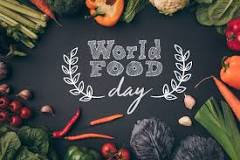
ROME, Oct 11 (IPS) – World Food Day 2024 This year the theme of World Food Day is ‘Right to food for a better life and a better future’. It is a timely reminder that all people have the right to adequate food. But how do we get from a right to a reality? And why is it so important to think not only about sufficient food, but also about the diversity of diets?
That is why I speak of ‘foods’ in the plural, emphasizing this diversity, but also the availability, accessibility and affordability of food for everyone. Currently, the world’s farmers produce more than enough food to feed the world’s population in terms of calories.
Yet approximately 730 million people face hunger as a result of man-made and natural disasters, including conflict, recurring weather shocks, inequality and economic downturn.
Billions do not have a healthy diet
Another harsh reality is that more than 2.8 billion people in the world cannot afford a healthy diet, which is a major cause of all forms of malnutrition.

We need a greater diversity of nutritious and affordable food available in our fields, fishing nets, markets and on our tables, for the benefit of all.
This is not only about the nutritional needs of the population, but also about ensuring that our agri-food systems are efficient, inclusive, resilient and sustainable, so that they can respect traditional food cultures and healthy diets, based on science and in line with personal preferences.
Another crucial consideration is the long-term health and sustainability of the environment we depend on to produce these foods and which requires biodiversity to thrive.
The right to food in itself will not fill stomachs or bring more diverse diets to the plate. But it does help shape our collective ambitions for the kind of just and equitable world we want to live in. It creates concrete obligations for governments and key partners to meet, and it should encourage us all to do our part to ensure this is achieved. .
This is the reason for action. Now.
The role of FAO
At the Food and Agriculture Organization of the United Nations (FAO), we are working hard to make this right a reality, even in the face of a range of challenges. In conflict areas, access to food is disrupted, leading to malnutrition and hunger.
In these and other pockets of hunger, FAO efforts are focused on rebuilding agricultural infrastructure to ensure the availability and accessibility of food for long-term food security, using all instruments and channels.
In addition to such emergency interventions, major FAO programs such as the Hand in Hand Initiative, One Country One Priority Product, Blue Economy and Technical Cooperation Programs (TCPs) also target food security and nutrition in the medium to long term in a large number of countries.
In many places, dietary changes and market concentration due to globalization have led to increased health problems, including obesity and diabetes. FAO-supported school feeding programs play an important role in addressing these challenges, as they source food from local farmers and ensure children receive nutritious meals.
In many countries, across all regions, FAO works with fishing communities and local governments to expand social protection and economic inclusion for the most vulnerable by helping them diversify production, build alternative sources of income and connect with new markets.
Inflation, especially during periods of economic instability, can make food unaffordable. For example, in some African countries, FAO initiatives include cash transfers to the poorest households, helping them pay for food during hyperinflation.
The climate crisis poses a significant threat to global food security. Irregular weather patterns and natural disasters can destroy crops and livestock. For example, in some countries in Asia, the FAO has introduced climate-smart farming techniques to help farmers adapt to changing climatic conditions, ensuring consistent food production.
In addition, by working closely with governments, FAO helps develop legal frameworks and has helped formulate national policies to ensure food security and nutrition for all.
Collective action needed
But it is not only governments that we call on to take part in this struggle. Collective action can bring about substantive change, with global cooperation from all sectors and all partners: governments, the private sector, academia, civil society and individuals.
And especially the youth – because a food secure future is their right. They design and decide the future. All calls from the UN Summit of the Future are determined by their actions.
Farmers can make a difference by practicing sustainable agriculture that increases biodiversity and uses natural resources responsibly. Companies can make nutritious and diverse food more affordable.
Academia and civil society can hold governments accountable by collecting data, identifying areas for improvement, implementing scientific solutions, and measuring progress toward goals.
Science and innovation, including IT, biotechnology, AI and digital agriculture, among others, will be a decisive force for the transformation of agri-food systems. Finally, all of us as consumers can and must play our part in reducing the ‘food footprint’, practicing healthy lifestyles, raising our voices to influence decision-making, reducing food waste and promoting food diversity.
This World Food Day sees us renew our commitment to building more efficient, inclusive, resilient and sustainable agri-food systems that respect everyone’s right to varied and nutritious food.
Together we can get back on track to achieve the 2030 Agenda for Sustainable Development – our collective pledge to take action for people, the planet and prosperity.
We can achieve this by transforming global agri-food systems to deliver the Four Better Values: better production, better nutrition, a better environment and a better life, leaving no one behind.
Our actions are our future.
Dr. QU Dongyu is Director-General of the Food and Agriculture Organization (FAO) of the United Nations
IPS UN Office
Follow @IPSNewsUNBureau
Follow IPS News UN Bureau on Instagram
© Inter Press Service (2024) — All rights reservedOriginal source: Inter Press Service







